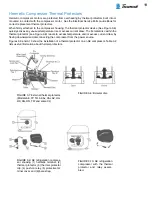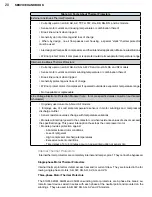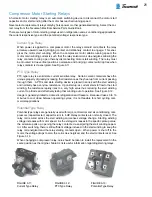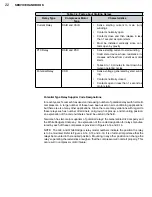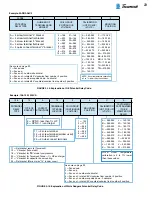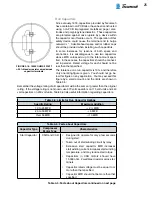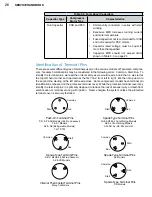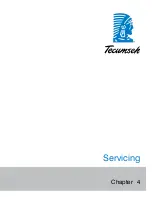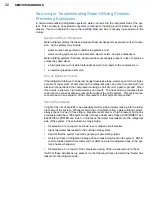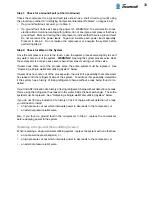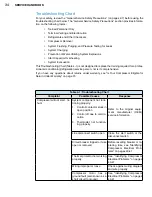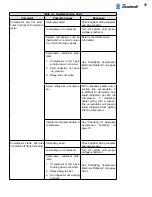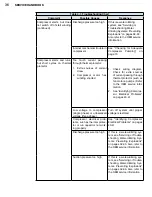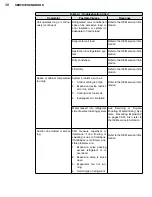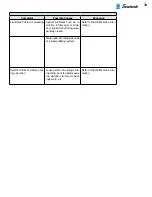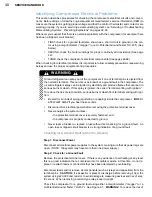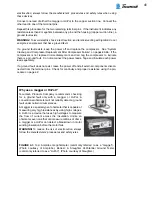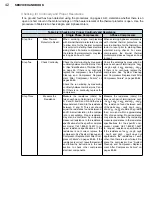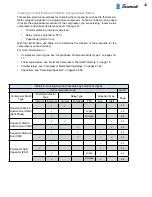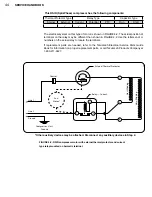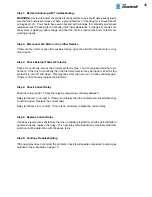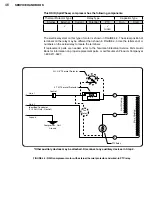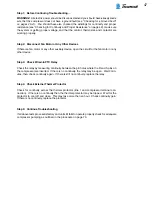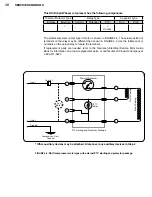
33
Step 1: Check for a Ground Fault (a Short to Ground)
Check the compressor for a ground fault (also known as a short circuit to ground) using
the procedure outlined in “Identifying Compressor Electrical Problems” on pages 40-41.
•
If a ground fault does not exist, go to Step 2.
•
If a ground fault does exist, keep the power off. WARNING! To avoid electric shock,
electrocution or terminal venting with ignition, do not energize a compressor that has a
ground fault. Mark and red tag the compressor to indicate that there is a ground fault.
Do not reconnect the power leads. Tape and insulate each power lead separately.
Proceed to Step 2. Do not replace the compressor or energize the system before
performing Step 2.
Step 2: Check for Water in the System
Once the compressor is cool to the touch, open the system process valve slightly to see if
any water comes out of the system.
WARNING!
Opening the system process valve while
the compressor is hot can cause severe burns from steam coming out of the valve.
If water does come out of the process valve, the entire system must be replaced. See
“Replacing a Single-wall Water-utilizing System” below.
If water does not come out of the process valve, there is still a possibility that some water
has leaked into the refrigerant side of the system. To address this possibility, determine
if the system has a history of losing refrigerant charge without a leak being found or re-
paired.
If you find ANY indication of a history of losing refrigerant charge without detection of a leak,
this is a sign that refrigerant has leaked in the water inside the heat exchanger. The entire
system must be replaced. See “Replacing a Single-wall Water-utilizing System” below.
If you do not find any indication of a history of loss of charge without detection of a leak,
you still need to install:
•
a high-pressure cut-out which interrupts power to ALL leads to the compressor, or
•
an external pressure relief valve.
Also, if you found a ground fault in the compressor in Step 1, replace the compressor
before applying power to the system.
Replacing a Single-wall Water-utilizing System
When replacing a single-wall water-utilizing system, replace the system with one that has:
•
a double-wall heat exchanger(s), or
•
a high-pressure cut-out which interrupts power to ALL leads to the compressor, or
•
an external pressure relief valve.
Summary of Contents for AH5540E
Page 1: ...Hermetic Compressor Service Handbook Wholesale Distribution North America...
Page 2: ......
Page 3: ...Hermetic Compressor Service Handbook Ann Arbor MI 48108 REV 3 11...
Page 4: ......
Page 8: ......
Page 9: ...Chapter 1 General Service Safety Precautions...
Page 16: ......
Page 17: ...Chapter 2 Model and Application...
Page 22: ......
Page 23: ...Chapter 3 Compressor Motor and Component...
Page 36: ......
Page 37: ...Chapter 4 Servicing...
Page 38: ...30 SERVICE HANDBOOK...
Page 79: ...71...
Page 80: ......
Page 81: ...Chapter 5 Installation and Replacement...
Page 96: ......
Page 97: ...Liquid refrigerant migration to compressor FIGURE 6 1 Chapter 6 Operation...
Page 108: ......
Page 109: ...Appendix...
Page 113: ...105 Reciprocating Compressor FIGURE A 2 Internal view of typical air conditioning compressor...
Page 118: ...110 SERVICE HANDBOOK Notes...
Page 119: ......

